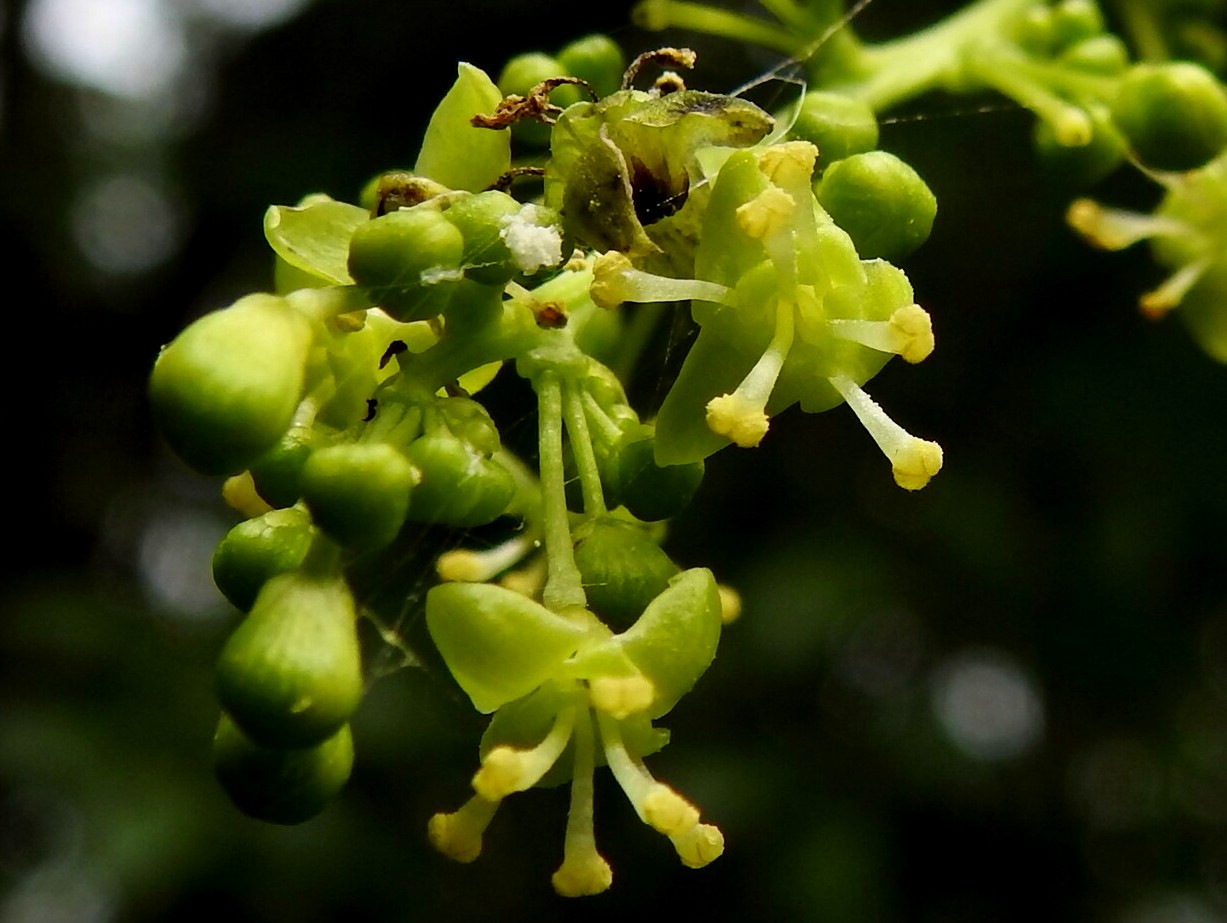Scientific Name : Tinospora cordifolia (Willd.) Hook.f. & Thomson
Category : Angiosperms
Status : Alive
Habit : An extensive climber with corky, grooved bark with adventitious aerial roots. Leaves : Thin 7-nerved, cordate with a broad sinus, venis reticulate, petiole long. Inflorescence : A raceme, longer than the leaves, axillary, terminal or from the old wood (cauliflorous). Flowers : Yellow, the male fascicled, the female usually solitary. Flowers appear when the plant is without leaves, pedicels slender, bracts lanceolate, the lower sometimes foliaceous. Male flowers with sepals 3, outer small, ovate-oblong, acute, the 3 inner large, thin, sub-orbicular, concave. Petals 6, each loosely embracing a stamen, claw wedge-shaped, limb trilobed and reflexed at the apex, stamens 6, free. Female flowers petals wedge-shaped, oblong with entire margins. Ovaries 3, stigma forked. Fruit : A drupe, 1-3 convex, flat, red. Seeds thin and concave convex like a watch-glass. Flowering and Fruiting Time : April - May Significance : The stems are used as a decoction for well-known tonic properties. The oil expressed from the seeds is used in the treatment of tuberculosis of the lungs. The dry stems powdered after drying in the shade are used to reduce high blood pressure.
Specimen Information
-
Common Name(s):
गुळवेल, Indian Tinospora, heart-leaved moonseed
-
Synonym(s):
Menispermum cordifolium Willd. Cocculus convolvulaceus DC. Tinospora fosbergii Kundu
-
Family:
Menispermaceae
About Me:
-
Created By:
admin
Botany Department (DVP College, Nimgaon Sawa) -
Created On:
05-09-2022
-
Contact:
Phone: 9960072282
Email: [email protected]
Find Location:
Photo Gallery





